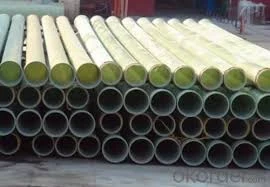
-
 Afrikaans
Afrikaans -
 Albanian
Albanian -
 Amharic
Amharic -
 Arabic
Arabic -
 Armenian
Armenian -
 Azerbaijani
Azerbaijani -
 Basque
Basque -
 Belarusian
Belarusian -
 Bengali
Bengali -
 Bosnian
Bosnian -
 Bulgarian
Bulgarian -
 Catalan
Catalan -
 Cebuano
Cebuano -
 China
China -
 China (Taiwan)
China (Taiwan) -
 Corsican
Corsican -
 Croatian
Croatian -
 Czech
Czech -
 Danish
Danish -
 Dutch
Dutch -
 English
English -
 Esperanto
Esperanto -
 Estonian
Estonian -
 Finnish
Finnish -
 French
French -
 Frisian
Frisian -
 Galician
Galician -
 Georgian
Georgian -
 German
German -
 Greek
Greek -
 Gujarati
Gujarati -
 Haitian Creole
Haitian Creole -
 hausa
hausa -
 hawaiian
hawaiian -
 Hebrew
Hebrew -
 Hindi
Hindi -
 Miao
Miao -
 Hungarian
Hungarian -
 Icelandic
Icelandic -
 igbo
igbo -
 Indonesian
Indonesian -
 irish
irish -
 Italian
Italian -
 Japanese
Japanese -
 Javanese
Javanese -
 Kannada
Kannada -
 kazakh
kazakh -
 Khmer
Khmer -
 Rwandese
Rwandese -
 Korean
Korean -
 Kurdish
Kurdish -
 Kyrgyz
Kyrgyz -
 Lao
Lao -
 Latin
Latin -
 Latvian
Latvian -
 Lithuanian
Lithuanian -
 Luxembourgish
Luxembourgish -
 Macedonian
Macedonian -
 Malgashi
Malgashi -
 Malay
Malay -
 Malayalam
Malayalam -
 Maltese
Maltese -
 Maori
Maori -
 Marathi
Marathi -
 Mongolian
Mongolian -
 Myanmar
Myanmar -
 Nepali
Nepali -
 Norwegian
Norwegian -
 Norwegian
Norwegian -
 Occitan
Occitan -
 Pashto
Pashto -
 Persian
Persian -
 Polish
Polish -
 Portuguese
Portuguese -
 Punjabi
Punjabi -
 Romanian
Romanian -
 Russian
Russian -
 Samoan
Samoan -
 Scottish Gaelic
Scottish Gaelic -
 Serbian
Serbian -
 Sesotho
Sesotho -
 Shona
Shona -
 Sindhi
Sindhi -
 Sinhala
Sinhala -
 Slovak
Slovak -
 Slovenian
Slovenian -
 Somali
Somali -
 Spanish
Spanish -
 Sundanese
Sundanese -
 Swahili
Swahili -
 Swedish
Swedish -
 Tagalog
Tagalog -
 Tajik
Tajik -
 Tamil
Tamil -
 Tatar
Tatar -
 Telugu
Telugu -
 Thai
Thai -
 Turkish
Turkish -
 Turkmen
Turkmen -
 Ukrainian
Ukrainian -
 Urdu
Urdu -
 Uighur
Uighur -
 Uzbek
Uzbek -
 Vietnamese
Vietnamese -
 Welsh
Welsh -
 Bantu
Bantu -
 Yiddish
Yiddish -
 Yoruba
Yoruba -
 Zulu
Zulu
inserting rock bits techniques and strategies for efficient
Inserting Rock Bits Techniques and Strategies for Efficient Drilling
In the world of drilling, the selection and insertion of rock bits is a crucial component that can significantly impact overall efficiency and productivity. Rock bits are essential for penetrating various geological formations and play a key role in the drilling process for oil and gas exploration, mining, and construction. This article explores effective techniques and strategies for inserting rock bits to optimize drilling operations.
Understanding Rock Bits
Before diving into insertion strategies, it is important to understand the different types of rock bits available. The three primary categories are roller cone bits, fixed cutter bits, and diamond bits. Each type is designed for specific geological conditions and rock formations. Roller cone bits are versatile and suitable for various applications, while fixed cutter bits are best for hard rock formations. Diamond bits, although expensive, are known for their superior performance in ultra-hard materials. The choice of the rock bit should align with the geological conditions to ensure effective drilling.
Insertion Techniques
1. Proper Bit Selection The first step in efficient drilling is the careful selection of the rock bit. Factors such as rock hardness, the presence of fractures, and the drilling depth should influence the type of bit chosen. Utilizing advanced geological surveys and modeling can help identify the most suitable rock bit for a particular drilling operation.
inserting rock bits techniques and strategies for efficient

2. Optimal Weight on Bit (WOB) The weight applied to the bit during drilling is crucial. Too little weight can result in slow penetration rates, while too much weight can lead to bit damage. It is essential to find the optimal WOB to maximize penetration rate while maintaining bit longevity. This involves continuous monitoring and adjustment throughout the drilling process.
3. Rotary Speed The rotational speed of the drill bit, often measured in revolutions per minute (RPM), also influences drill performance. Faster speeds can enhance penetration rates but may wear the bit prematurely if not managed correctly. Striking a balance between speed and wear allows for greater efficiency, ensuring the bit operates at an optimal RPM suited to the rock type.
4. Drilling Fluid Management The use of appropriate drilling fluids is vital to maintain hydrostatic pressure and remove cuttings efficiently. The choice of fluid can affect cooling, lubrication, and the overall stability of the borehole. Employing the right chemical formulas and maintaining proper circulation rates can significantly improve the insertion of rock bits.
5. Regular Inspection and Maintenance Ongoing inspection of drilling equipment, including rock bits, is essential for maintaining efficiency. Regular check-ups can identify early signs of wear and tear, allowing for timely replacements and adjustments. Implementing a proactive maintenance schedule not only prolongs the life of the bit but also enhances drilling performance.
Conclusion
Inserting rock bits effectively requires a combination of the right tools, skills, and strategies. By carefully selecting the appropriate bit, managing weight on bit, controlling rotational speed, optimizing drilling fluid, and conducting regular maintenance, drilling operations can achieve enhanced efficiency and reduced costs. The ongoing evolution of technology and drilling practices continues to shape the industry, enabling engineers and operators to adopt more sophisticated approaches to rock bit insertion, ultimately leading to improved productivity in various drilling projects.









